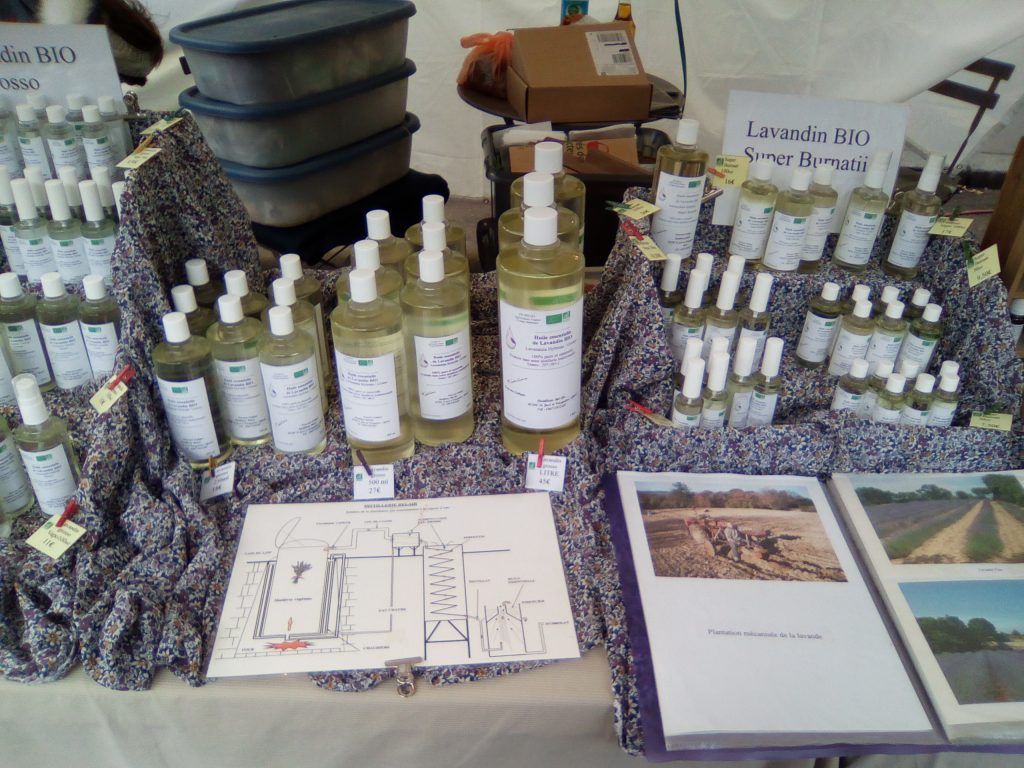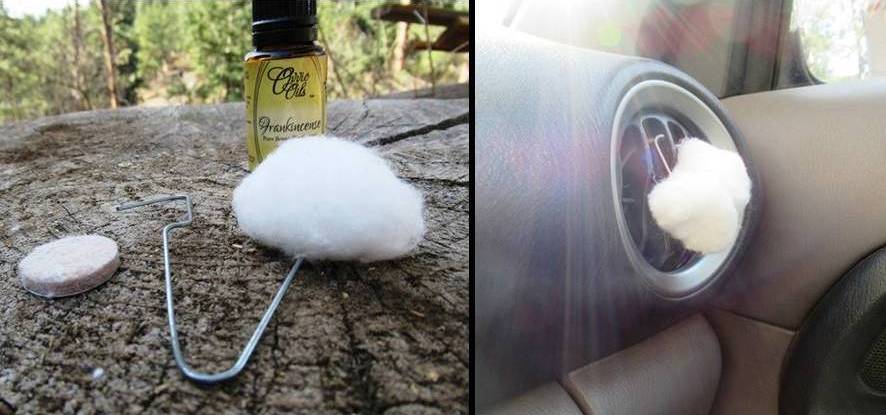Most people have the ability to associate certain smells with different emotions and state-of-mind in their life. A favorite childhood recipe cooking may evoke feelings of security and calm, a harsh smell can create headaches, and earthy scents may trigger thoughts of spring or fall.

Essential oils are made from distilled and concentrated plant extracts (Photo by JJ Georges/Wikipedia)
JJ Georges, CC BY-SA 4.0, via Wikimedia Commons
Smells affect us depending on our previous experiences with them. Essential oil therapy (sometimes called aromatherapy), originally developed in the 1930s by a French chemist and perfumer, uses naturally extracted aromatic essences from plants to “balance, harmonize and promote the health of body, mind, and spirit.”
Essential oils are physically distilled (usually by steam) from plants to concentrate the natural plant oils that are stored in external structures found on the plant (when you touch the plant, it releases scent). These are collected and usually combined with an alcohol compound for use in aromatherapy products.
How and where the essential oil concentrates are made can make a big difference in the potency of the end product, so do some research to find a good distributor to work with.
Things to consider are the distillation date, country of origin, cost, product testing, NAHA (National Association for Holistic Aromatherapy) or other association memberships, and how the plant products are derived (organic, unsprayed, or wildcrafted).
How to make a DIY diffuser for your vehicle
The most common way of using essential oils is by a diffuser. A diffuser allows a drop or two of essential oil to slowly evaporate using air (or sometimes heat) to release the scents that are then inhaled. There are many commercial diffusers available, but try this easy and cheap version for use in your vehicle.
You will need a couple of cotton balls, a paper clip or safety pin, and your choice of essential oil. Using the paperclip, hook a cotton ball on one end and form a hook to attach to the air vent of the vehicle with the other end. Add 1-2 drops of essential oil (do NOT over-concentrate) to the cotton ball and hang from the air vent.

Super easy DIY Essential Oil Diffuser for your RV (Photos by TC Wait)
As an alternative, you can use felted wool (the natural fiber absorbs the essential oils the best) and cut into fun shapes that you can leave on the dashboard. This could be a fun craft to do with kids. Heat from the dash will diffuse the oil.
Safety
When using essential oils, use the practice of less is more. A drop or two goes a long way, and over-doing it (especially in a small space like a vehicle) can cause adverse reactions.
Like any chemical (natural or otherwise), using essential oils improperly can result in health and safety concerns, particularly if you are using them around children, animals, people with underlying medical issues (ie asthmatics, COPD, etc.), or during pregnancy. Excess amounts of any essential oil can cause headaches, nausea, or respiratory problems. Please do your research and use the oils ONLY as directed.
Not all essential oils are suitable for use in a vehicle. For example, lavender and chamomile are extremely calming and relieve anxiety, however, they can make a driver over-relaxed or sleepy at the wheel. Eucalyptus is great for cleansing the air and masking foul odors, however, it can be quite overpowering and can make a driver restless which could result in irritability, speeding, or road rage.
Some essential oils to try on your next trip
To help combat road rage
- Frankincense – Reduces heart rate and high blood pressure and has anti-anxiety and depression-reducing abilities. It is also good at killing bacteria, so it can have a disinfectant effect while traveling.
- Ylang Ylang – Helps regulate the heartbeat, lifts your mood, and is an effective antidepressant with a positive effect on mood and emotional state.
For drowsiness
- Peppermint – Good for increasing mental alertness and also car sickness, but it can be too strong for children traveling with you.
- Grapefruit – Helps you remain alert yet calm while driving. It can relieve headaches and fatigue and help avoid the sluggishness that sets in on long drives.
- Lemongrass – Helps you concentrate better, and is great at removing stuffy car smells. It is a milder alternative to peppermint oil when you have children in the car.
- Rosemary – Helps keep you fully awake and alert while driving. It increases focus and concentration and helps you make rational decisions quickly.
To prevent car sickness
- Ginger – Helps with car sickness, and can be paired with any citrus or lemongrass oils.
- Orange – Not only can it combat motion sickness, but it can also increase physical energy and help you be more aware and accepting of the environment around you.
To help keep focused
- Cinnamon – Keeps you alert while helping you have focus and concentration. It increases circulation and helps with headaches and fatigue from long hours of driving.
- Lemon – Its strong citrusy smell is energizing and invigorating, but it also helps bring down anxiety and frustration. It can put you in a better mood when you have to sit through traffic jams.
Many essential oils can be blended in specific combinations as well!

A lot of people travel with pets. Please be aware the anything in the tea tree family is EXTREMELY toxic to dogs and cats. It can be fatal , in fact. http://www.petpoisonhelpline.com/poison/tea-tree-oil/
Love this idea. I want to try it in my car!
It would be prudent to make sure all members of the family are okay with the scent – you have to share this space after all. And thanks for pointing out that pets, children and other adults can get very sick from scents and aromas.
Some essential oils can damage surfaces and plastic. I would place the felt or cotton containing the essential oil drops in a glass container. I would not recommend placing the cotton ball or felt directly on the car dashboard or directly on any car surface.
In the words of the esteemed VP of the USA, Spiro Agnew, I do not wish to be a “nay saying nabob of negativism” but what is the foundation of these different scents affecting different emotions? Research, Studies, Marketing?